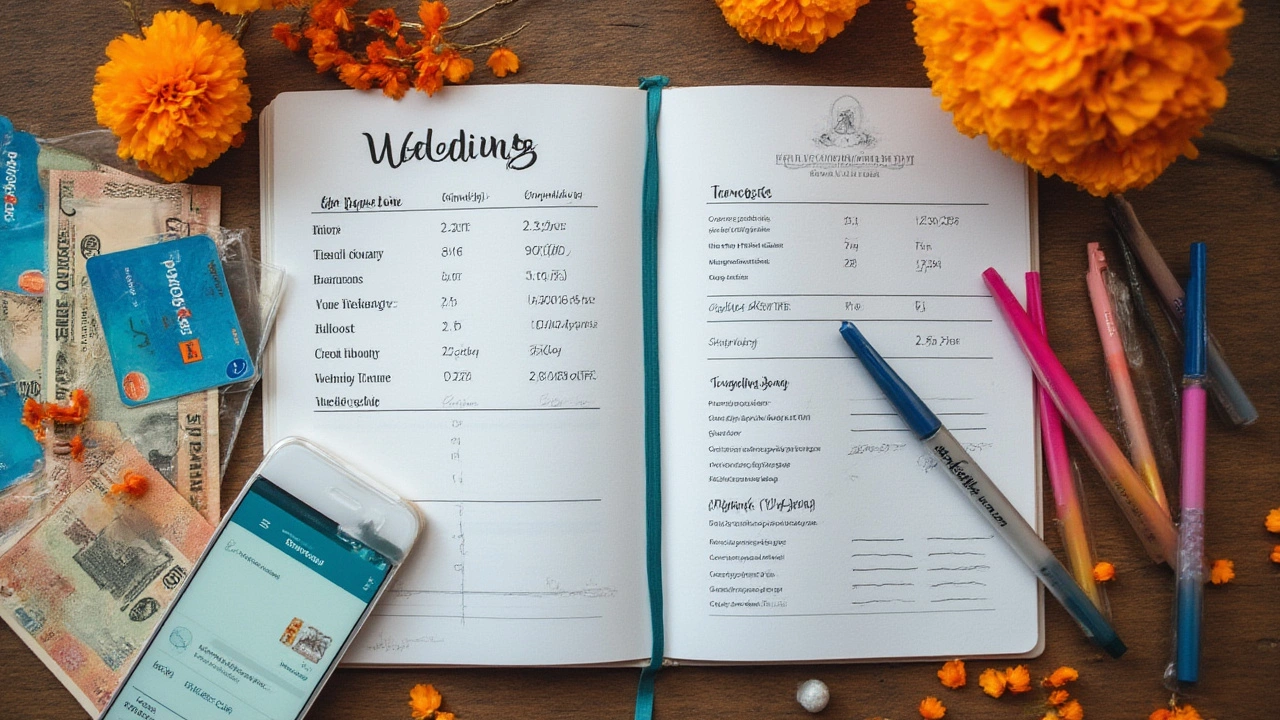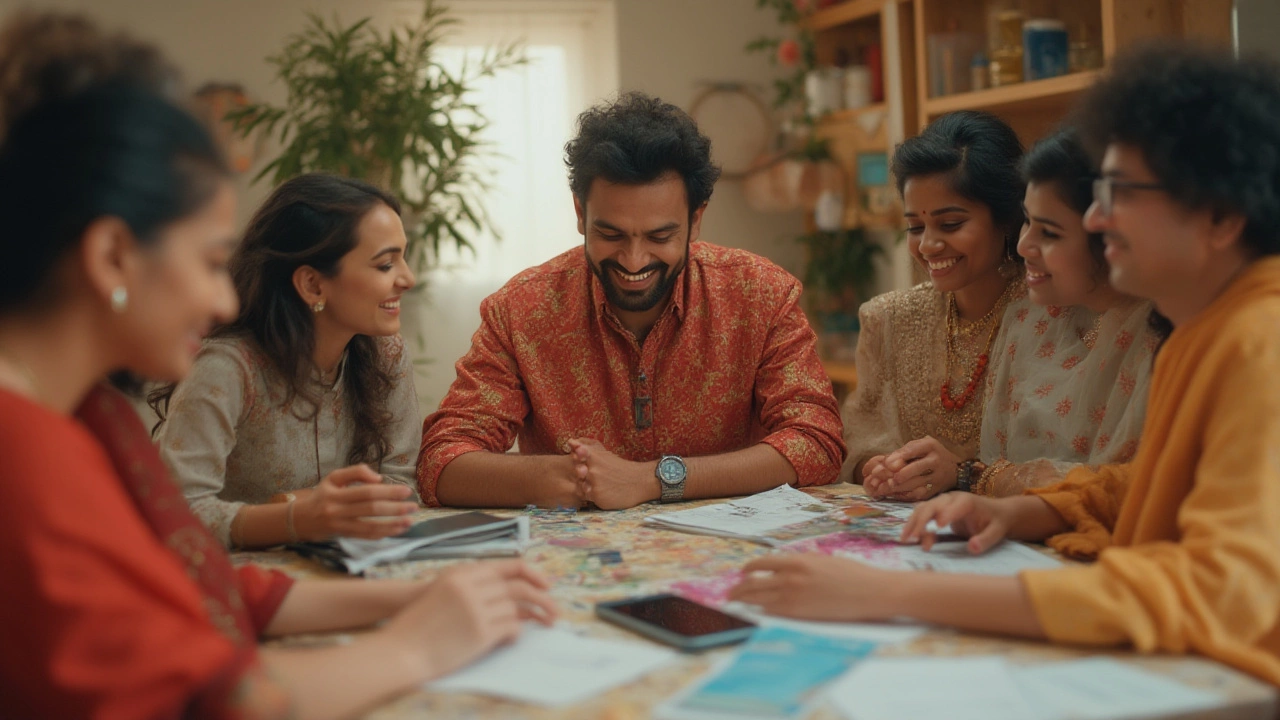So you’ve nailed down the guest list, tasted twelve cakes, and survived endless family opinions about centerpieces. Now there’s one burning (and maybe awkward) question left: who buys the honeymoon? It’s a question nobody teaches you in school, and if you ask your friends, get ready for everything from blank stares to conflicting advice. Whether you’re the bride, the groom, or on honeymoon version 2.0, let’s unpack how couples today are navigating this cost—and sometimes, rewriting the rules altogether.
The Origin of Paying for the Honeymoon: Outdated Traditions Meet Modern Life
Flash back a few generations, and honeymoons were something families whispered about, usually tied up in a web of etiquette and finances that made little sense. In Victorian England, it wasn’t even called a honeymoon—it was 'bridal tour,' and mostly for wealthy families, often paid for by the groom or his family. The expectation? The man provides. By the 1950s, Western culture (hello, Hollywood movies!) had cemented the idea that the groom, or his family, should cover the trip as a symbol of him being a provider. That vibe stuck, especially in some parts of the world where wedding costs were split along old-fashioned gender lines.
Jump to 2025, and life looks a lot different. Today, 60% of couples say they share honeymoon costs equally, according to a 2024 survey by WeddingWire. Many couples cohabitate before marriage or pool their resources for big life steps, so splitting costs makes sense. But that doesn’t mean expectations have vanished. Some families still insist on paying for everything—or at least contributing. A recent poll by The Knot found 28% of couples had at least partial funding from parents, often as a wedding gift.
Internationally, customs vary too. In India, where wedding traditions run deep, honeymoons are often part of the wedding gift from the bride’s side, especially in urban families. In Southeast Asia, friends sometimes chip in, turning the honeymoon into a communal celebration rather than a secret escape. And in some Middle Eastern cultures, extravagant honeymoons still symbolize status and family honor—costs are fully covered by the groom or his family.
Why are these traditions breaking down? Millennials and Gen Z couples are more likely to value independence and want to tailor honeymoons to their lifestyle, not just tradition. They also wait longer to marry, with more established careers and incomes, so splitting costs feels fair. There’s less pressure now for one side to "prove" anything with an over-the-top gesture, and more willingness to ditch old scripts for what actually works.
Breaking Down Today’s Honeymoon Costs: Who Pays What, and Why?
Let’s get real—honeymoons aren’t always the all-inclusive, two-week Maldives escapes of Instagram. The average cost of a honeymoon in 2025 sits around $5,100 for international getaways, though budget and local trips can cost much less. But no matter your plans, the most useful thing to know is how couples decide who pays for what.
Here are the most common setups:
- Joint Payment: The most popular approach. Couples split the trip 50/50, or each picks up certain parts—say, one covers flights, the other handles hotels and activities.
- Gifted Honeymoon:
- Family-funded: Parents or close relatives offer to pay as their wedding gift. Sometimes this comes with strings, like input on the destination or even travel companions (yes, that happens!).
- Honeymoon fund: Instead of traditional wedding gifts, guests contribute cash for travel expenses. Platforms like Honeyfund or Zola make this easy, and it’s way less awkward than bussing around a blender at the reception.
- One-Person Payment:
- Still happens, but less common. Sometimes, one fiancé surprises the other by covering everything, usually for a milestone birthday or just for sentimental reasons. It’s thoughtful, but can be a lot of pressure.
- Mix-and-match:
- One partner pays for flights, the other does accommodation, or both split excursions. No rules—just what feels fair and manageable.
Total transparency about money is the best gift you can give each other here. Start the conversation early. Do you both want to splurge on luxury? Or take a chill, budget-friendly road trip and save for a future house? (More than 40% of couples polled by Mint opted for budget honeymoons, putting the bigger spend toward other goals.) Decide together, so nobody resents footing a larger share later.

Money Talks: Navigating Awkward Conversations Without Ruining the Mood
Wedding budgets spark drama—honeymoons can, too. Maybe one set of parents offers to pay, or a friend insists on gifting you a spa weekend. How do you keep things smooth, grateful, and drama-free?
First, get on the same page as a couple about what you want. Are your expectations for five-star luxury? Or is the real dream a small Airbnb with lots of hiking? Talk early about must-haves, deal-breakers, and, yes, absolute maximum spend. People avoid this convo because money is sensitive, but hashing it out together now saves massive headaches.
If family wants to pay (and maybe has strong opinions), gently set boundaries. "Thank you, we’d love your help, and we’ll keep you posted on the plans" lets you accept their generosity without putting them in the driver’s seat. For gifts tied to guilt or pressure, remind each other what matters most—you, your partner, and the trip memories. Not every kind of support needs to be accepted.
- Tip: Put it in writing. Email or text summaries mean everyone has the same facts and fewer chances for misunderstanding or future disappointment.
If setting up a honeymoon fund, be tactful with wording. Couples now often include a short note with registry links: “Your presence is our gift! If you’d like, you can help us make travel memories in Bali instead of giving a physical present.” Most guests appreciate the honesty, and these funds go a long way—92% of couples who set up a honeymoon fund in 2024 said they put every dollar toward the trip, not bills or unrelated expenses.
The main pitfall? Making assumptions. One study by Zola found that almost 30% of couples argued about who would pay for the honeymoon because expectations weren’t clear from the start. Don’t slip into silent assumption mode. If your expectations or budget don’t match up, aim for compromise: maybe postpone a more expensive trip and do a low-key escape now, saving the dream trip for your first or fifth anniversary.
Modern Honeymoons: Creative Solutions for Every Budget
With couples rewriting the norms on who pays, honeymoons themselves are changing, too. From micro-moons (short, budget trips right after the wedding) to adventure-minis (think hiking in Ladakh or cycling in Goa), couples are ditching cookie-cutter packages for trips that reflect their real interests. And let’s not ignore the rise of groupmoons—hybrid vacations with friends, family, or even pets in tow.
Here are a few fun approaches couples are trying in 2025:
- Honeymoon registry hacks: Platforms like Honeyfund, NewlyWish, or Blueprint let guests sponsor specific experiences—candlelit dinners, snorkeling lessons, or breakfast in bed. Couples get flexibility, and guests get that warm feeling of making your dream trip happen.
- Delayed honeymoons:
- Not enough cash after the big day? No shame in waiting. Many couples book their trip six months or even a year later, giving time to save for something truly memorable.
- Loyalty points & budget tricks:
- Travel hacking is real. Couples are stacking credit card points, using promo fares, or cashing in work perks to get free or discounted upgrades. Don’t roll your eyes—one Wall Street Journal feature claimed a couple paid under $1,000 for a $5,000 Bali trip using rewards and deals.
- Off-season escapes:
- Pick a dreamy destination outside high season—think post-monsoon Kerala or late spring in Europe. Save major cash and skip the crowds.
Modern couples are prioritizing authenticity—experiences over extravagance. It turns out that the best honeymoons aren’t about how much you spend, but how intentional you are about creating memories. Pew Research Center data from 2024 backs this up: Couples who planned together and set realistic budgets reported more satisfaction with the trip and less post-wedding financial regret.

Tips for Smooth Honeymoon Planning & Budgeting
Okay, deep breath—you know you need a plan, but where do you even start? Here’s a cheat sheet for keeping things stress-free, wallet-friendly, and drama-proof:
- Start with honest talks. Sit down together and ask, “What do we really want out of this? What memory matters most?” Make lists of dream spots and actual must-haves.
- Research real numbers. Prices changed fast in the last few years, so get accurate quotes for flights, stays, activities, and food. Set aside a contingency fund—budget 10% more than you think you’ll need for surprise expenses.
- Define who pays. Decide early. If parents or friends offer to chip in, clarify how much and when. If you’re splitting costs, work out percentages or specific components.
- Use tech to your advantage. Set up spreadsheets, use travel apps to track deals, and calendar reminders for deposits. Tools like Splitwise are lifesavers for managing shared costs.
- Keep everyone in the loop. Send updates to family involved in the finances. If you set up a registry, use fun stories about what their gift will mean—people love knowing they’re part of a happy memory, not just handing over cash.
- Remember flexibility. If life throws a curveball, adjust. Maybe your trip gets pushed back, or you tweak the itinerary for a better fit. Give yourself permission to pivot without guilt.
Above all, focus on what matters. You’ll remember the coconut water at sunset way more than whoever paid for the beach view. A honeymoon, after all, isn’t about anyone else’s expectations. It’s your adventure, your way. Splitting costs, accepting gifts, or finding a DIY solution—do what feels right for both of you. The only real rule is making it yours.









